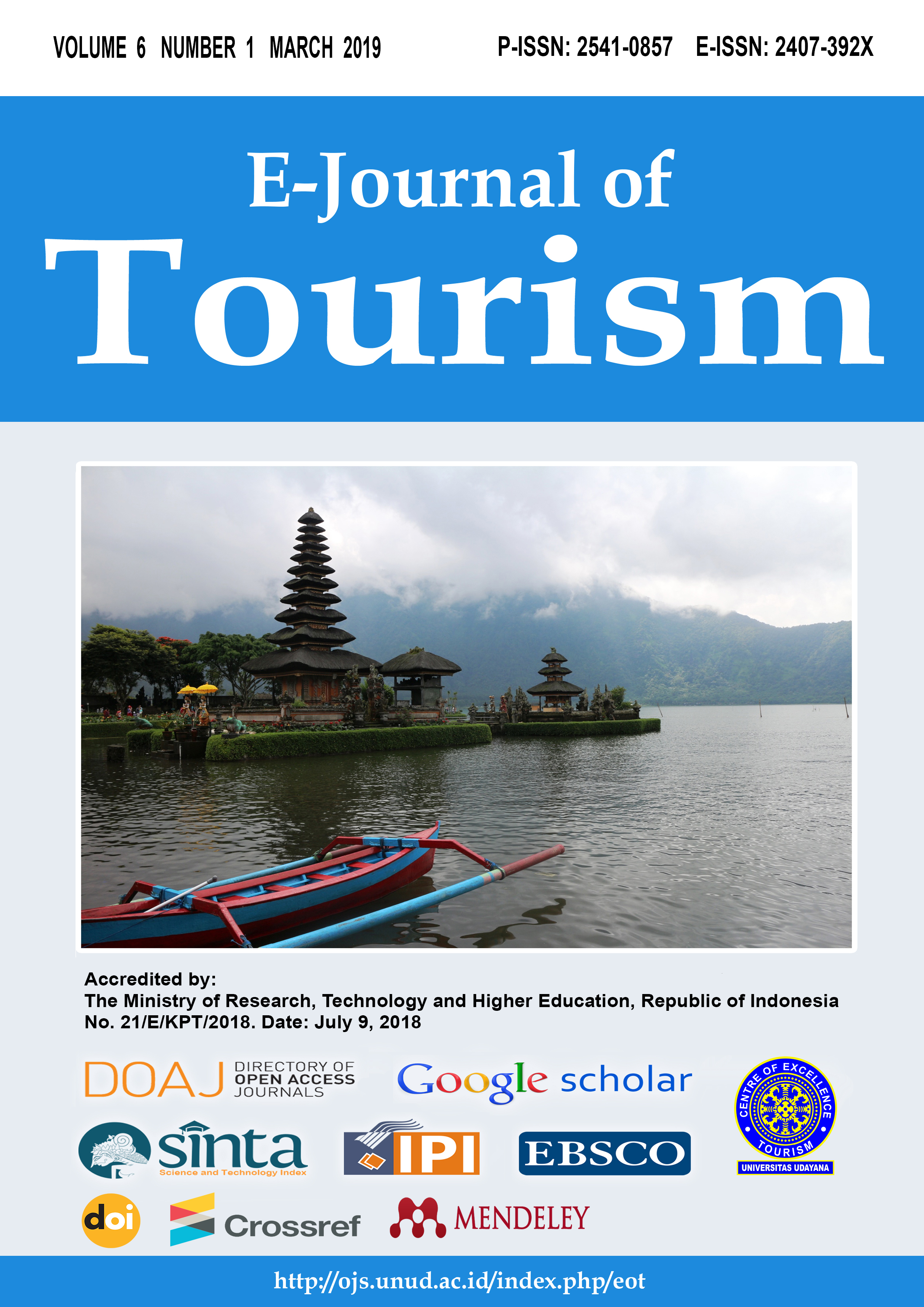Tour Consumer Analysis Syllabus
Events Management Curricula Innovation in The Field of Tourism Studies
Abstract
Currently, there is no undergraduate program majoring Events Management in Indonesia. It is a challenge for creating the syllabus that complies with national and global uniformity and still has own characteristic. The strengths of Events Management Body of Knowledge (EMBOK) are the ‘management, administration and operations’ sides, which applied by many universities’ curricula. Adding syllabi focusing on ‘consumptions’ sides of the tour consumer (or audience in events) is relevant in the tourism studies since it is strongly connected with culture and performing arts. The aim of this paper is describing the process of innovating the “Tour Consumer Analysis” syllabus in undergraduate Events program (S1 Event) under tourism study at Universitas Prasetiya Mulya – Indonesia by applying SCAMPER technique and continued with putting it all together into 16 sessions of the course. The syllabus was implemented in one semester to 32 students. Three kinds of evaluation and feedback were designed. The students presented brilliant event ideas and audiences journey. This showed that with this syllabus, learning objectives are achieved. Second, students upload their feedback about their understanding of the topic. Lastly, in the next semester, students implemented some concepts on their theatrical performance and art By focusing on the tour consumer, students have the ability to create events that can make them re-visit or stay longer in the same destination to give a bigger impact on society. Further research to conduct integration with other courses is necessary.
Keywords: events management, syllabus innovation, SCAMPER, tourism curricula.
Downloads

This work is licensed under a Creative Commons Attribution 4.0 International License.
The copyright of the received article shall be assigned to the journal as the publisher of the journal. The intended copyright includes the right to publish the article in various forms (including reprints). The journal maintains the publishing rights to the published articles.




















